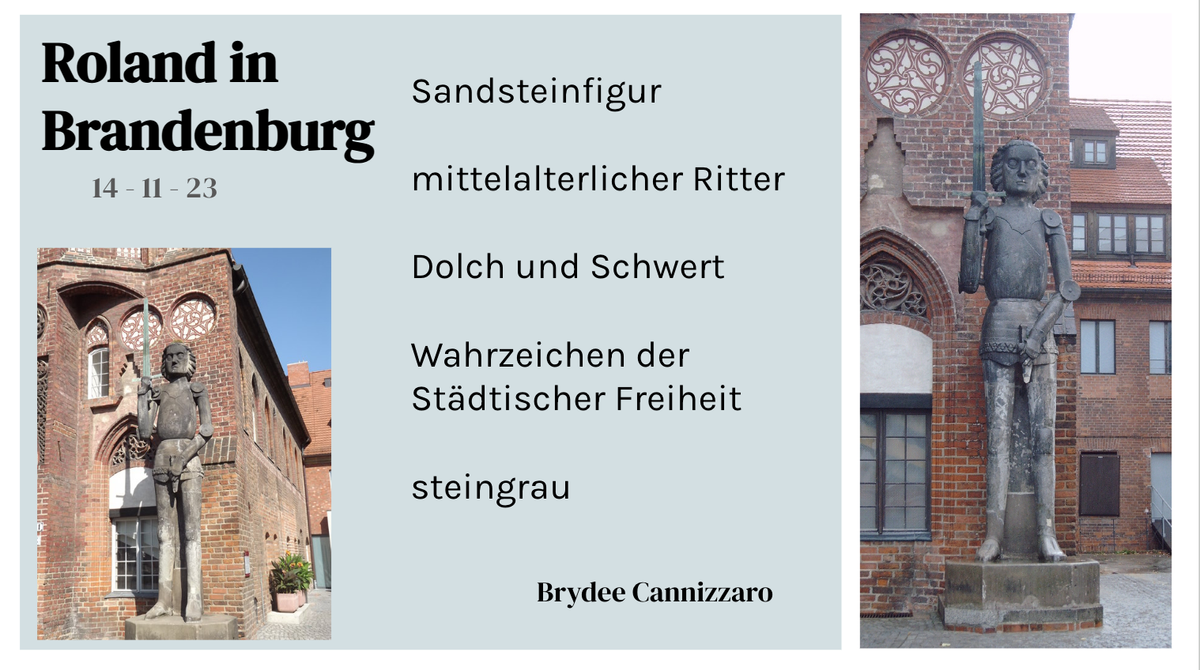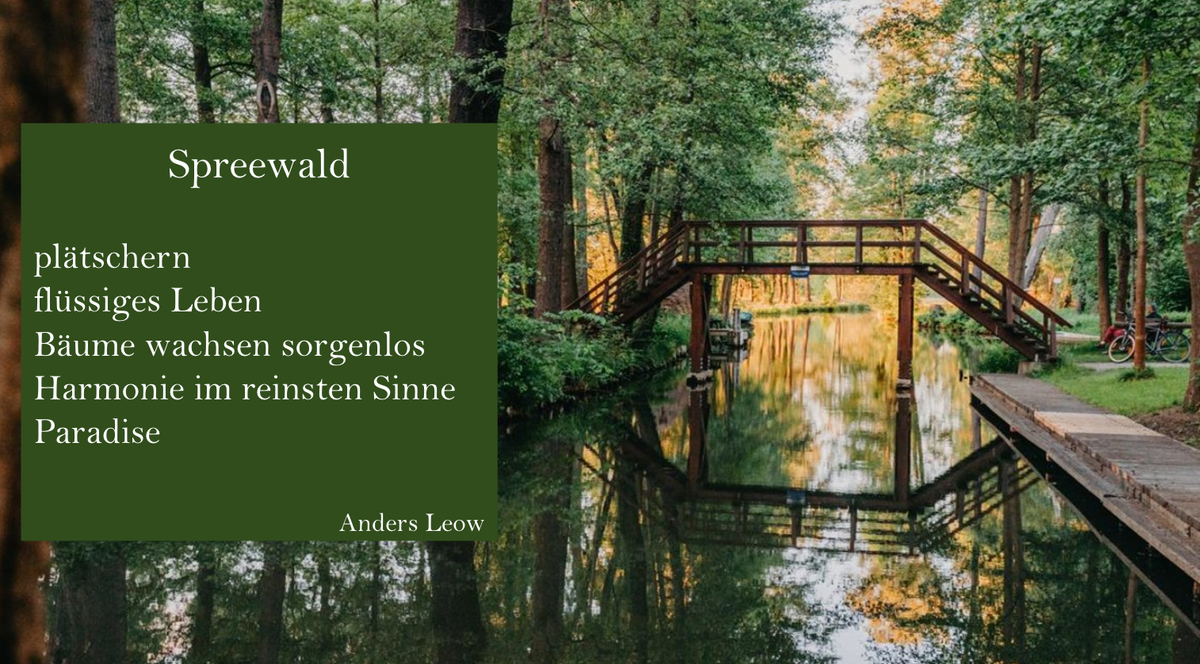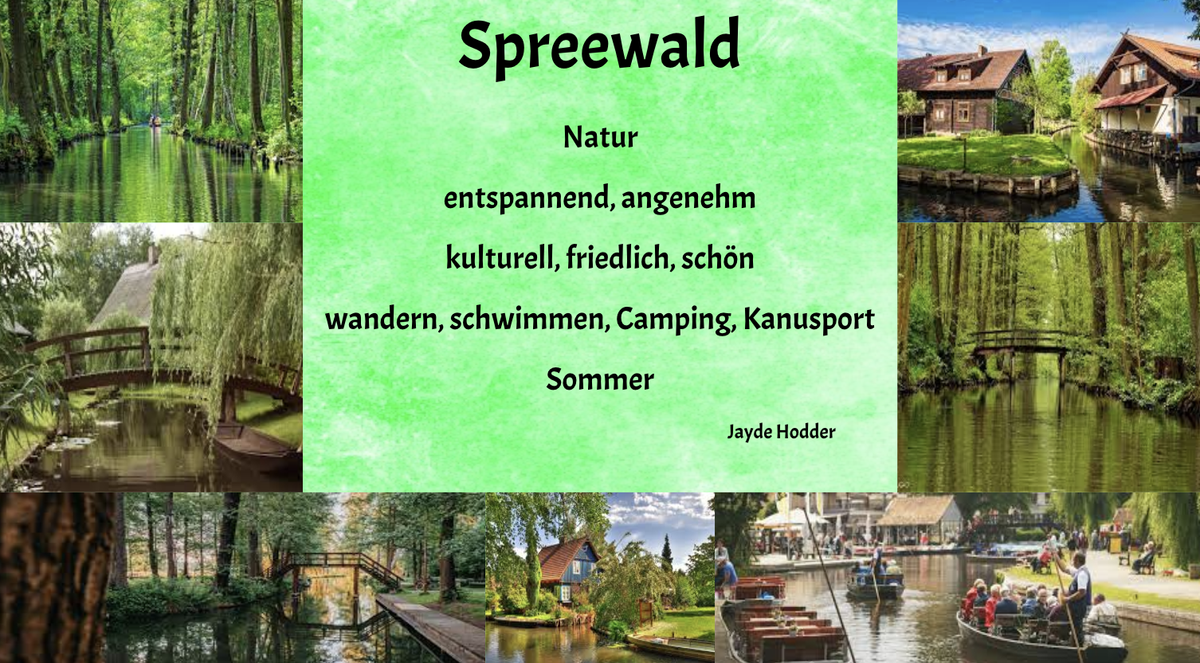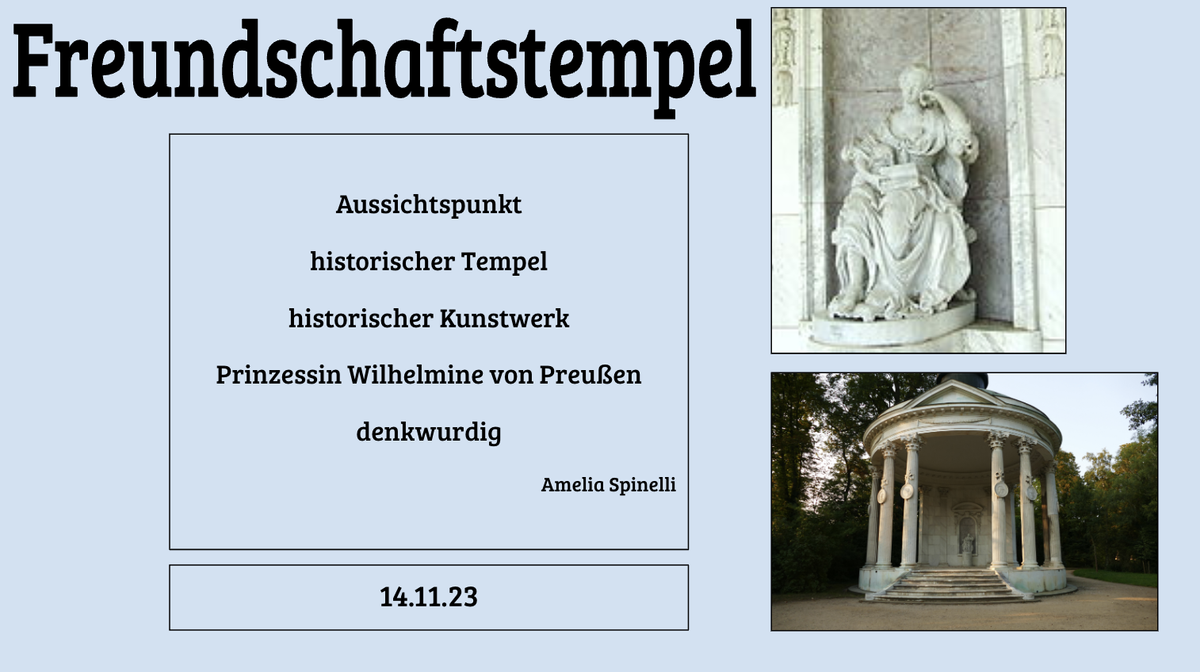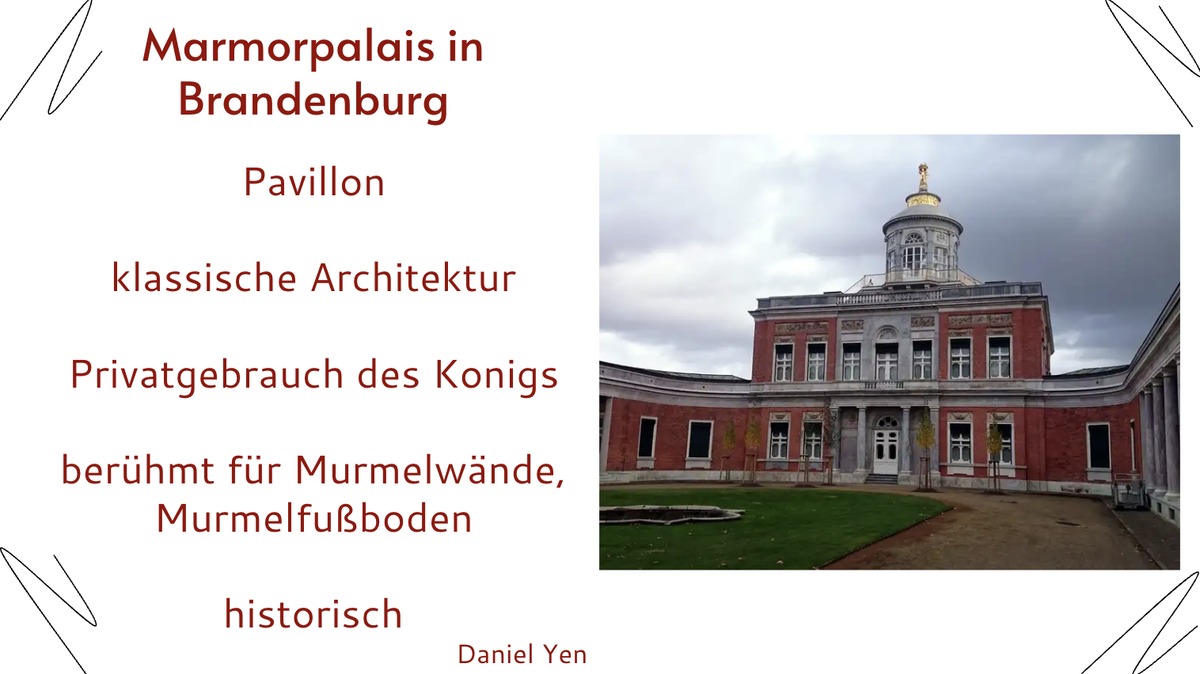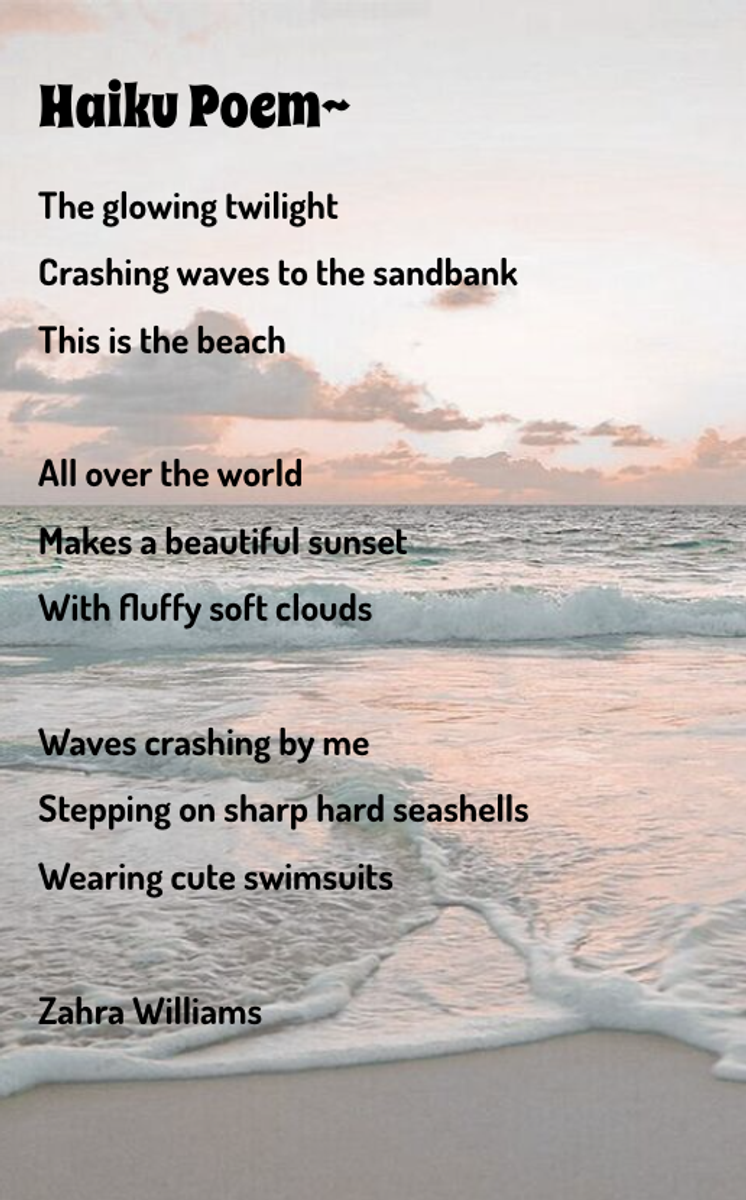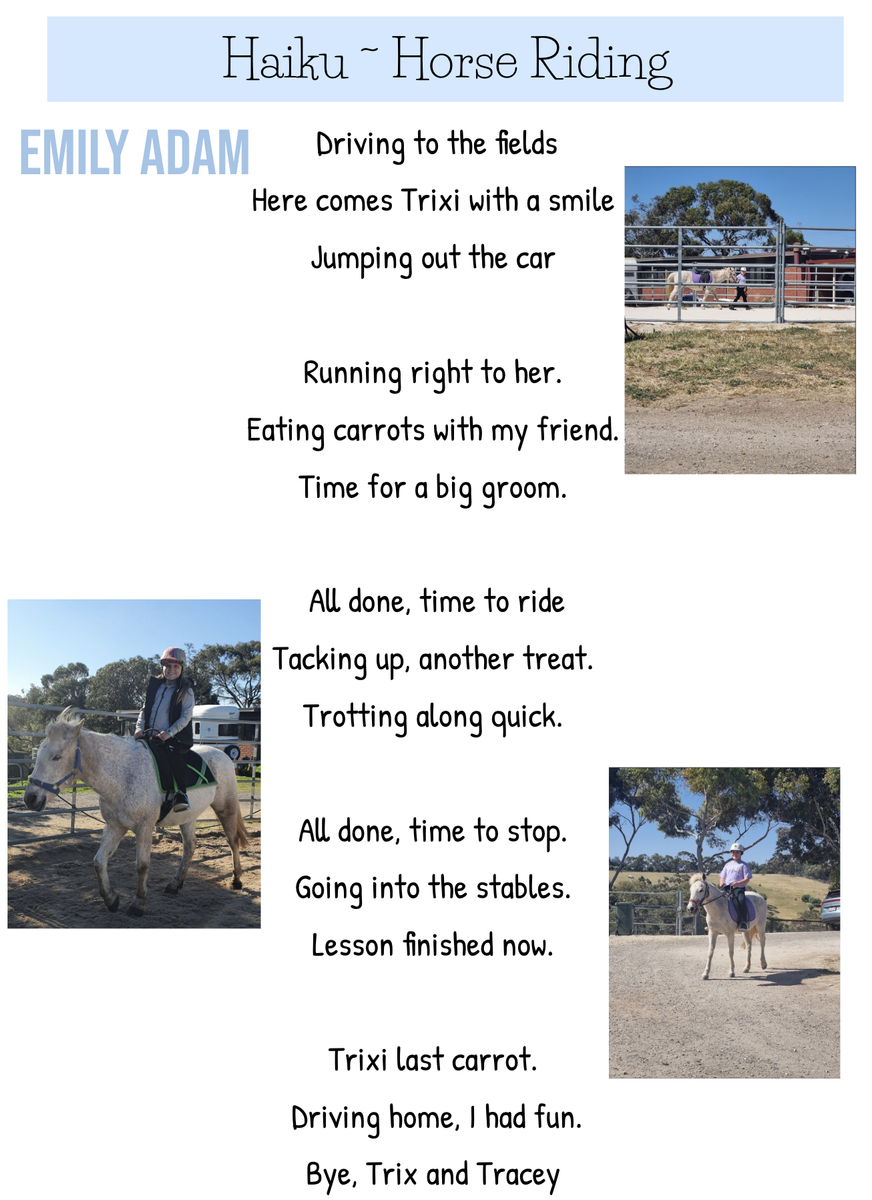Deutsche Ecke
R-2, 4/5 Libby Edwards
Yrs 3-6 Emma Chesterman

Deutsche Ecke
R-2, 4/5 Libby Edwards
Yrs 3-6 Emma Chesterman
Cross-Curricular Poetry
interdisziplinäre Gedichte
Poetry is a lot of fun and can be a true test of vocabulary when you are trying to create rhythm and rhyme. Year 5-6 students have been reading and writing poetry in English this term and both their teachers and I saw an opportunity to connect across our subject areas. As part of the South Australian German Teachers Association poster competition featured in our last newsletter, our senior students must compose an Elfchen – elf meaning eleven, and -chen a diminutive suffix. The Elchen is like the Haiku, with a set form; however, it is unique because it has 11 words, the lines having 1-2-3-4-1 words. The suggested content for each line is:
Ein Wort – One Word
Ein Gedanke, ein Gegenstand, eine Farbe, ein Geruch.
A thought, thing, colour, smell, etc.
Zwei Wörter – Two Words
Was macht das Wort aus Zeile 1?
What does it do? What is it?
Drei Wörter – Three Words
Wo oder wie ist das Wort aus Zeile 1?
Where, When, Why, How is it?
Vier Wörter – Four Words
Was meinst du?
What is happening? What do you think about it?
Ein Wort – One Word
Fazit: Was kommt dabei heraus?
A word to summarise or name the thing or to tell what it produces.
In contrast, the Haiku has a structure of the 5-7-5:
5 syllables on line 1
7 syllables on line 2
5 syllables on line 3
The last line must leave a lingering image/message. The content aims to appeal to the five senses of touch, smell, sight, hearing, and taste, and as you have a limited length you must carefully consider every word that you use.
Senior students have produced some wonderful Haiku and Elfchen based on the area of Brandenburg state in Germany, and these will be included in their handwritten poetry journals in English. Cross-curricular links can be so powerful and enrich the learning of our students. Enjoy making meaning from some of the Haiku and Elfchen from our senior students!
